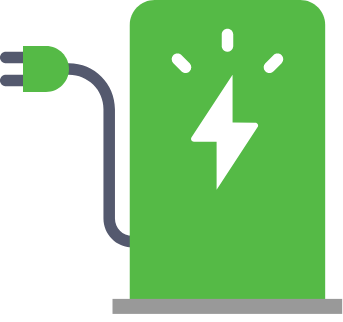You and the planet
Human activity is changing the planet …
Emissions of greenhouse gases have already warmed the climate, increased sea levels and increased the frequency of extreme events.
We need to do things differently if we are to prevent the dangerous impacts of climate change.
Climate change presents a threat to humanity
The global temperature is steadily climbing as a direct result of human activity
Many modern industries that we take for granted - such as transportation, agriculture and energy production - cause substantial greenhouse gas emissions. When more of these gases are added to the atmosphere more of the sun’s heat is retained, leading to a warmer planet.
If this carries on unchecked there may be catastrophic consequences, but we still need transport, electricity and food.
We need to do things differently
Global temperatures and targets
0ºC
1ºC
1.5ºC
2ºC
3ºC
4ºC
0ºC
Pre-industrial
1ºC
Today and increasing at a rate of 0.2ºC per decade.
1.5ºC
Paris Agreement aspiration, basis for UK net-zero 2050 target and amended Climate Change Act.
2ºC
Basis for the 2008 Climate Change Act. UNFCCC have stated that there is “dangerous climate change” above 2ºC. Paris Agreement commits to keep global temperature below this point.
3ºC
If current NDCs [global emissions reduction commitments] are followed and continued.
4ºC
If emissions continue to increase at their present rate.
What are we doing about it?
Governments from around the world have recognised the problems caused by greenhouse gas emissions and met in Paris to discuss the situation in 2015
In what is known as the Paris Agreement, governments agreed to prevent the dangerous impact of climate change. They committed to do this by ensuring that the increase in global average temperature stayed well below 2°C above pre-industrial levels and are pursuing efforts to keep it below 1.5°C, further reducing the risk.
The Paris Agreement
targets
Limiting temperature rise
Adaptation
Finance

Net-zero

Nationally determined contributions
Global stocktake
Emissions reductions

Net-zero

Nationally determined contributions
Global stocktake
How do we hit the 1.5°C target?
Every country needs to reduce emissions massively
The global aim is to get to ‘net-zero’ emissions early in the second half of the 21st Century. The UK has committed to do this by 2050, and was the first major economy to do so.
Reaching net-zero means that the flow of greenhouse gases into the atmosphere happens at the same rate as they are removed.
Emissions will have to be cut as close to zero as possible, but it’s unlikely that we can completely stop all emissions from human activity by then.
So, as well as reducing emissions, we will also need to actively remove greenhouse gases from the atmosphere.
What are the 6 main sources of emissions?
The main sources of greenhouse gases are:

 27%
27%
Transport
Many cars, planes, trains and ships use fossil fuels like petrol, diesel or kerosene to produce energy and so produce CO2
 24%
24%
Energy
Power stations that burn fossil fuels, such as coal or gas, produce CO2
 17%
17%
Business
The production of materials like concrete or steel produces CO2
 15%
15%
Residential
Water heating in homes using gas, oil or even wood produces CO2
 10%
10%
Agriculture
Animal farming produces methane, a greenhouse gas, and fertiliser production produces carbon dioxide (CO2). Additionally, using fertilisers produces another greenhouse gas, nitrous oxide (N2O)
 4%
4%
Waste
The decomposition of organic material, like food waste, in land fill produces greenhouse gases like methane
The destruction of carbon-rich ecosystems, for example cutting down forests to make room for farming or urban development, also has a big impact as the carbon they have stored is released into the atmosphere


How can we reduce emissions?
We need to change the way we do things
Fossil fuels have to be replaced with power sources that don’t create CO2. Coal and gas electricity production will have to be replaced by wind and solar power, while petrol and diesel vehicles can be replaced with battery-powered alternatives.
There is also a need to bring in new technologies such as low-carbon concrete and hydrogen storage
And while much of the change needs to come from governments and businesses, individuals can also play a part by making choices that reduce their emissions. For example, reducing waste, changing eating habits, and flying less.

How can we remove greenhouse gases?
As futuristic as it sounds, it is possible to reduce the amount of CO2 in the atmosphere. Some of these methods are already in use; others will require further research and investment.
It will require a combination of different approaches to meet the ‘net zero’ emissions target by 2050.

What can we do now
to reduce CO2?
CO2 is added and removed from the atmosphere as part of what is called the carbon cycle. The natural world already has some mechanisms for removing CO2. For example, through photosynthesis, plants absorb CO2 and produce oxygen. This means removing forests for heavy industry or cattle farming
has a double impact: not only do greenhouse gas emissions increase, but nature’s capacity to remove CO2 from the air is reduced too. There are several solutions that use biological processes to capture and store CO2 in forests, wetlands and soils.
These include:

Forestation

Wetland restoration

Soil carbon sequestration
What can we do in the future to remove CO2?
We’ll need a mix of several technologies. depending on how successfully we reduce emissions. Some will be ready soon, others may take longer to implement effectively.
These include:

Biochar

Enhanced weathering

Direct air capture with carbon sequestration (DACCS)

Bioenergy with carbon capture and storage (BECCS)
Some of these processes store CO2 in minerals or in biological matter, but DACCS and BECCS produce a pure stream of CO2 that needs to be stored. This would need to be done in what are known as ‘CO2 reservoirs’, such as depleted oil wells or gas fields.
Can we achieve our 2050 goals?
Meeting the UK’s net-zero target will not be simple, but can be achieved with a combination of substantial reductions in emissions and greenhouse gas removal
Emissions reduction target by 2050
Some methods that remove CO2 from the atmosphere come with additional benefits such as crop productivity enhancement or flood protection, paying back the costs of implementing them. However, many others don’t and will only happen if there is a way of paying for them.
This could involve direct payments for removal, subsidies for farmers and other land owners, or new laws for those who produce emissions. We also need to change our personal habits to show governments and businesses that we want greener alternatives.
What next?
As an individual you can help make this change happen by engaging with local and national representatives to persuade them to boost measures to combat climate change.
You can also choose to reduce your own individual footprint, by making climate conscious decisions in how you power your home, what you eat or wear and how you travel.

